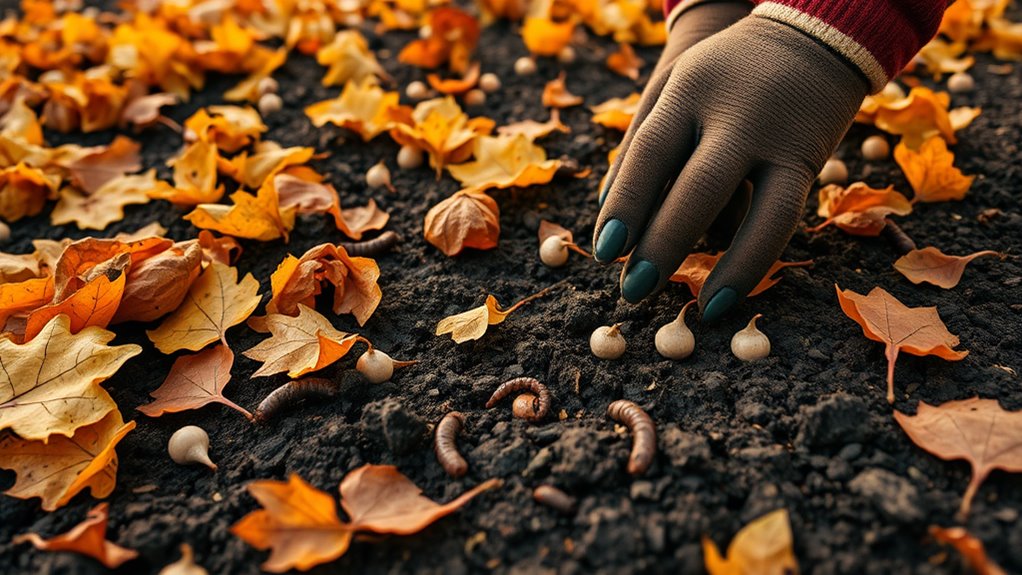Why You Should Be Starting Your Garden in Fall (Not Spring)
You’re gaining a significant edge by starting your garden in fall instead of spring. You’ll reduce heat stress on plants with cooler temperatures, allowing strong roots to establish before winter and improving moisture retention for better growth. Enhance soil health by adding compost and mulch, boost yields with hardy crops like garlic, minimize pests through rotation, and extend your harvest season. These tactics set you up for success—uncover more ways to elevate your garden now.
Benefits of Fall Weather for Plant Establishment
Because fall’s cooler temperatures reduce heat stress on young plants, you’ll find it easier to establish strong roots before winter. Incorporating seasonal gardening timing lets you plant during ideal fall conditions, avoiding summer’s intensity for better moisture retention and growth. This method minimizes transplant shock, builds plant resilience, and sets up a thriving garden that rebounds strongly in spring, maximizing your efforts. Additionally, many crops thrive in ideal fall conditions, which can lead to a more bountiful harvest.
Enhancing Soil Health Through Autumn Preparation
As fall’s cooler weather helps your plants establish roots, you’ll next focus on soil health by tackling autumn preparations.
This builds a strong foundation for your garden.
- Test your soil’s pH and nutrients to identify amendments.
- Incorporate compost or organic matter to boost microbial activity.
- Apply mulch to retain moisture and suppress weeds.
- Plant cover crops like clover to prevent erosion and enrich the soil.
- Conducting soil pH testing is crucial for understanding the specific needs of your garden.
Boosting Crop Yields With Fall Planting Strategies
How can you boost your crop yields with fall planting strategies? By planting in fall, you’ll give crops a head start, allowing roots to establish during cooler weather for vigorous spring growth. Choose hardy varieties, use mulching for moisture retention, and time plantings precisely. Additionally, fall planting can enhance year-round gardening by ensuring that your garden is productive and vibrant throughout the seasons.
| Strategy | Benefit | Example |
|---|---|---|
| Plant hardy crops | Faster spring growth | Garlic or kale |
| Apply mulching | Improves soil warmth | Organic straw |
| Optimize timing | Maximizes root development | Late autumn sowings |
Reducing Pests and Diseases in Cooler Seasons
While cooler seasons naturally suppress many pests and diseases, you can enhance your garden’s resilience with targeted strategies that prevent issues before they escalate. These methods keep your plants healthy and productive.
- Rotate your crops to disrupt pest patterns and disease cycles.
- Choose disease-resistant plant varieties for better protection.
- Maintain cleanliness by removing dead plants and weeds promptly.
- Regularly inspect your garden and treat early signs of problems swiftly.
- Implementing natural barriers can also significantly reduce the presence of pests in your garden.
Extending the Gardening Season With Fall Starts
Why not extend your gardening season with fall starts?
You’ll sow cool-weather crops like kale and garlic in autumn, allowing them to establish roots before winter hits. This technique lets you harvest fresh produce well into cooler months and guarantees vigorous spring growth. Additionally, fall gardening practices can help improve soil health and promote biodiversity in your garden.

